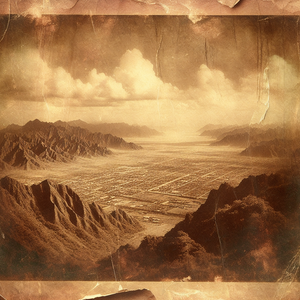From Hobbyist to Professional: Transitioning into Design Careers

For many aspiring designers, the initial spark of creativity ignites as a hobby. Whether it’s doodling in a sketchbook, experimenting with graphic design software, or crafting handmade goods, these activities often serve as the foundation for a future career. However, transforming this passion into a full-fledged profession requires more than just talent; it demands dedication, strategy, and a willingness to learn.
Building a Portfolio
One of the crucial steps in transitioning from hobbyist to professional is building a robust portfolio. This body of work showcases a designer’s skills, style, and versatility. Example: Take the story of Maria Gonzalez, a San Antonio-based graphic designer who began her journey creating digital illustrations in her spare time. Maria started by curating her best pieces on platforms like Behance and Instagram. She also engaged in personal projects, such as designing posters for local events, which not only enhanced her portfolio but also connected her with the community. Tip: Aspiring designers should focus on quality over quantity. Select pieces that reflect your unique style and showcase a range of skills, from typography to layout design. Consider including personal projects that resonate with your interests or values, as these can set you apart from others.
Networking Effectively
Networking is an essential component of any creative career. Building relationships within the design community can lead to job opportunities, collaborations, and invaluable mentorship. Example: David Ramirez, who transitioned from a graphic design hobbyist to a full-time designer at a well-known agency, emphasizes the importance of attending local design meetups and workshops. “I met my first mentor at a networking event. He helped me refine my skills and eventually connected me with my current job,” he recalls. Tip: Join local organizations such as AIGA San Antonio or attend creative events and workshops to meet fellow designers and industry professionals. Don’t hesitate to reach out on social media platforms like LinkedIn to connect with established designers. Building a supportive network can provide insights into the design industry and open doors to new opportunities.
Gaining the Necessary Skills
While passion and creativity are vital, acquiring technical skills is equally important. Many successful designers recommend a blend of formal education and self-learning. Example: Jessica Lee, who began her career as a hobbyist photographer, took online courses in graphic design and web development to expand her skill set. “I found that investing time in learning new software and design principles made a significant difference in my work quality and marketability,” she shares. Tip: Consider enrolling in local design courses, workshops, or online platforms like Skillshare and Coursera to enhance your knowledge. Additionally, seek feedback from peers and mentors to improve your craft continuously. Specializing in certain areas, such as user experience or motion graphics, can also give you a competitive edge in the job market.
Finding Your Niche
As you transition into a professional designer, identifying your niche can significantly impact your career trajectory. Specializing can help you stand out in a crowded market. Example: Tim Johnson, who started as a hobbyist focused on web design, discovered a passion for user experience (UX) design after attending a workshop. By honing his skills in this area, he positioned himself as a sought-after designer for tech startups in San Antonio. Tip: Experiment with different design styles and mediums to discover what resonates with you. Once you find your niche, tailor your portfolio and networking efforts to reflect your specialized skills and interests, which can lead to more meaningful job opportunities.
The transition from hobbyist to professional designer is a journey filled with challenges and opportunities. By building a strong portfolio, networking effectively, gaining the necessary skills, and finding your niche, aspiring designers in San Antonio can successfully navigate this path. The stories of individuals like Maria, David, and Jessica exemplify that with perseverance, creativity, and strategic planning, anyone can turn their passion into a rewarding career in design. Whether you’re just starting or looking to elevate your skills, remember that every successful designer began with a single step—turning a hobby into a profession. As the design landscape continues to evolve, embracing change and staying curious will be key to thriving in this dynamic field. With resources like local design agencies such as Draw House Concepts and community support, the journey from hobbyist to professional has never been more accessible.
User Experience (UX) Designer
Indeed, Amazon
Core Responsibilities
Conduct user research and usability testing to gather insights and improve design solutions.
Create wireframes, prototypes, and user flows that effectively communicate design concepts.
Collaborate with cross-functional teams, including developers and product managers, to implement user-centered designs.
Required Skills
Proficiency in design tools such as Sketch, Adobe XD, or Figma.
Strong understanding of user-centered design principles and methodologies.
Experience in conducting user interviews and analyzing data to inform design decisions.
Graphic Designer (Branding Specialist)
Landor & Fitch, Pentagram
Core Responsibilities
Develop and maintain a cohesive brand identity through visual assets, including logos, packaging, and marketing materials.
Collaborate with marketing teams to create visually appealing campaigns that reflect brand values.
Create style guides and design templates for consistent use across various platforms.
Required Skills
Expertise in Adobe Creative Suite (Photoshop, Illustrator, InDesign).
Strong typography and layout skills, with a keen eye for detail.
Ability to translate brand strategy into compelling visual stories.
Motion Graphic Designer
Disney, Vimeo
Core Responsibilities
Create engaging animations and visual effects for video content, advertisements, and digital platforms.
Collaborate with creative directors and video producers to develop storyboards and visual concepts.
Stay updated on design trends and software advancements to enhance animation quality.
Required Skills
Proficiency in animation software such as After Effects, Cinema 4D, and Adobe Premiere Pro.
Strong storytelling skills and an understanding of timing, pacing, and visual rhythm.
Experience with 2D and 3D animation techniques.
Web Designer (Specializing in E-commerce)
Shopify, BigCommerce
Core Responsibilities
Design and develop user-friendly e-commerce websites that enhance the online shopping experience.
Optimize website layout and functionality for improved user engagement and conversion rates.
Work alongside developers to ensure designs are implemented accurately and effectively.
Required Skills
Proficiency in HTML, CSS, and JavaScript, along with design software like Adobe XD or Figma.
Understanding of SEO best practices and responsive design principles.
Experience with e-commerce platforms such as Shopify or WooCommerce.
Product Designer (Industrial Design Focus)
IDEO, P&G
Core Responsibilities
Conceptualize and develop product designs from ideation through prototyping to final production.
Conduct market research and user testing to ensure products meet consumer needs and preferences.
Collaborate with engineers and manufacturers to ensure designs are feasible and meet quality standards.
Required Skills
Proficiency in CAD software such as SolidWorks or Rhino.
Strong understanding of materials and manufacturing processes.
Exceptional problem-solving skills and an ability to think creatively about design challenges.


